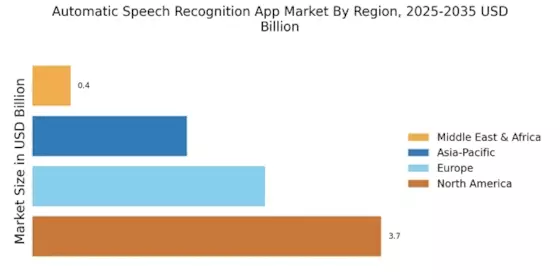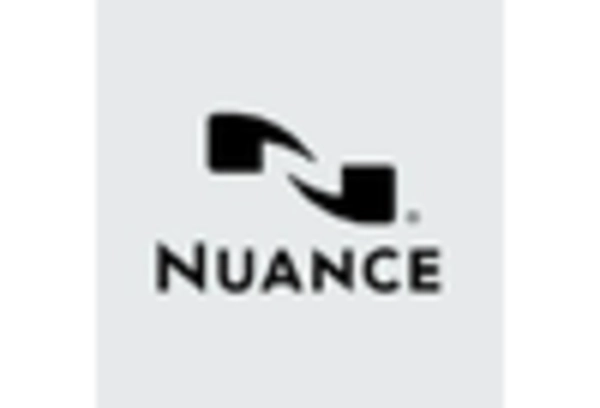Increased Focus on Customer Experience
In the Automatic Speech Recognition App Market, there is an increasing focus on enhancing customer experience. Businesses are leveraging speech recognition applications to streamline customer interactions, reduce wait times, and provide personalized services. By integrating these technologies into customer service platforms, companies can offer more efficient and responsive support. Data suggests that organizations utilizing speech recognition tools report higher customer satisfaction rates, as users appreciate the convenience and speed of voice-activated services. This emphasis on customer experience is likely to drive further investment in speech recognition technologies, fostering growth within the market.
Advancements in Machine Learning and AI
Technological advancements in machine learning and artificial intelligence are profoundly influencing the Automatic Speech Recognition App Market. These innovations enable more accurate and efficient speech recognition capabilities, allowing applications to better understand and process natural language. As algorithms improve, the accuracy of transcriptions and voice commands is expected to enhance, leading to increased user satisfaction. The integration of AI-driven features, such as contextual understanding and personalized responses, is likely to set new standards in the industry. This evolution not only attracts more users but also encourages businesses to adopt speech recognition solutions, thereby expanding the market's reach and potential.
Growing Need for Accessibility Solutions
The Automatic Speech Recognition App Market is witnessing a growing emphasis on accessibility solutions. As organizations strive to create inclusive environments, speech recognition technology plays a pivotal role in assisting individuals with disabilities. Applications that convert speech to text or facilitate voice commands are increasingly being integrated into educational and workplace settings. This trend is supported by legislative measures promoting accessibility, which further drives the adoption of speech recognition technologies. The market is expected to expand as more entities recognize the importance of providing equal access to information and services, thereby enhancing the overall user experience.
Expansion of Mobile and Cloud-Based Solutions
The Automatic Speech Recognition App Market is experiencing a significant expansion of mobile and cloud-based solutions. As mobile device usage continues to rise, applications that incorporate speech recognition are becoming increasingly prevalent. Cloud technology facilitates the storage and processing of vast amounts of voice data, enabling real-time transcription and analysis. This shift towards mobile and cloud solutions not only enhances accessibility but also allows for continuous updates and improvements in speech recognition capabilities. The market is poised for growth as more users adopt mobile applications that utilize these technologies, indicating a promising future for the Automatic Speech Recognition App Market.
Rising Demand for Voice-Activated Technologies
The Automatic Speech Recognition App Market is experiencing a notable surge in demand for voice-activated technologies. As consumers increasingly prefer hands-free interactions, applications that utilize speech recognition are becoming essential across various sectors. This trend is particularly evident in the automotive and smart home industries, where voice commands enhance user experience and safety. According to recent data, the market for voice-activated devices is projected to grow significantly, indicating a robust appetite for applications that facilitate seamless communication. This rising demand is likely to drive innovation within the Automatic Speech Recognition App Market, as developers strive to create more intuitive and responsive applications that cater to user preferences.

















Leave a Comment